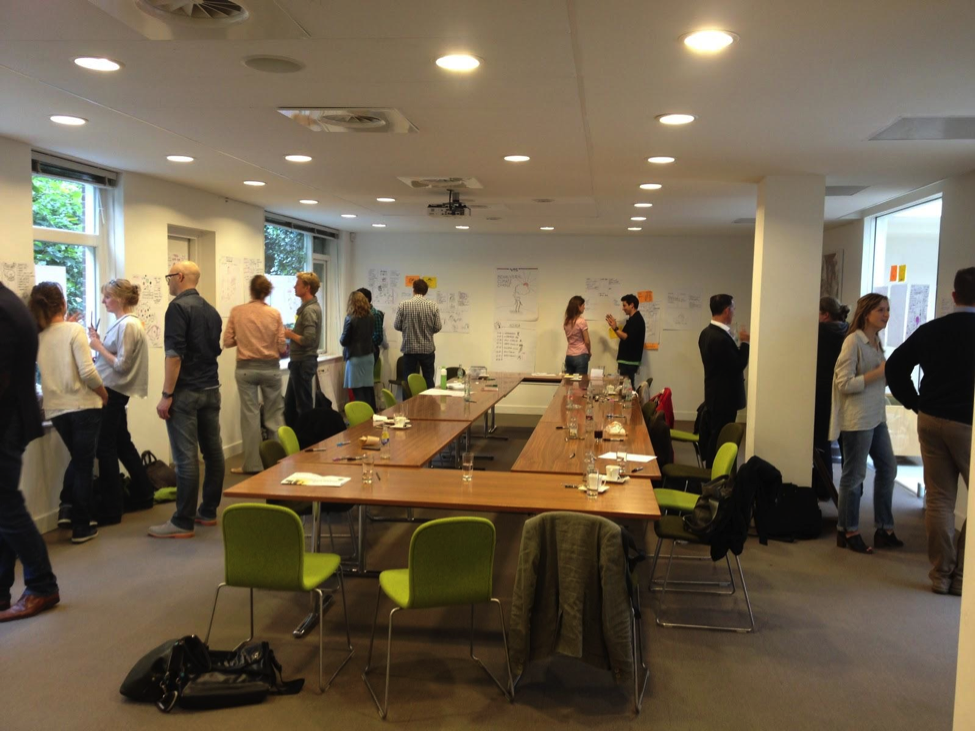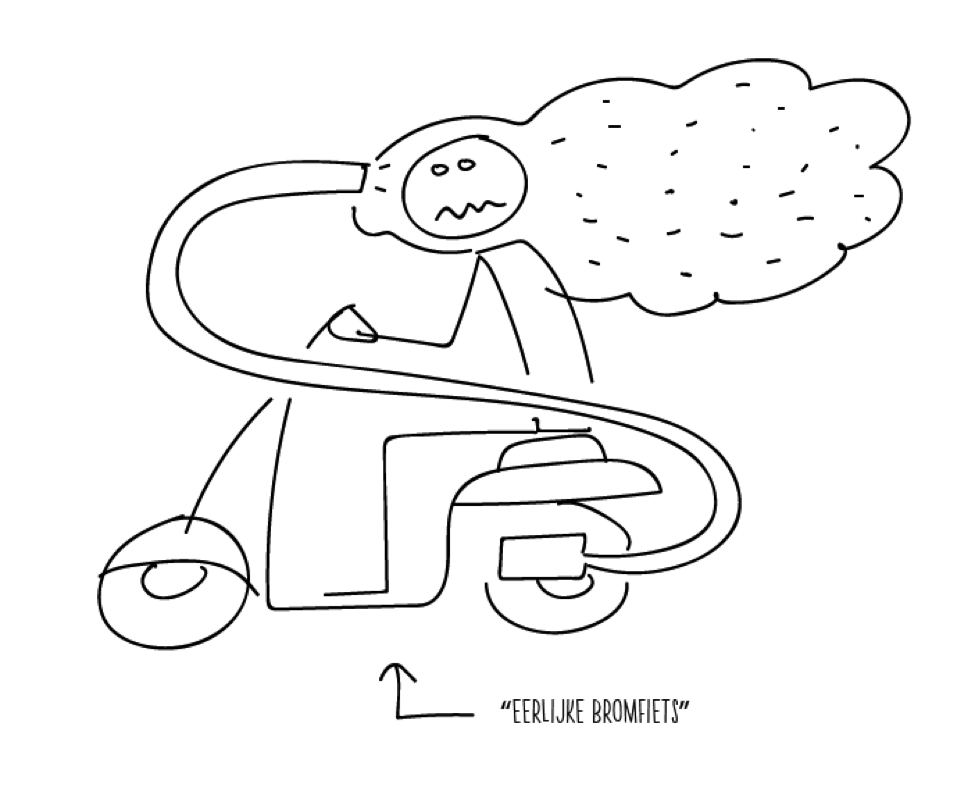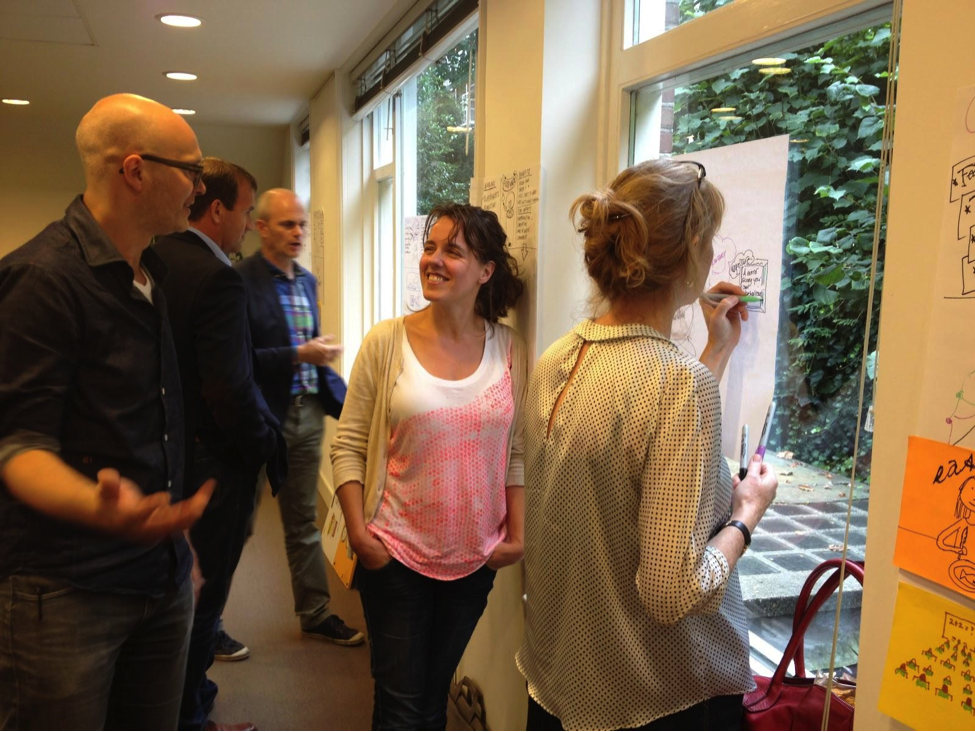Last Thursday we held Visual Thinking School (VTS) in our Amsterdam office. VTS is a sandbox event hosted by XPLANE, where we experiment together with people from our community. Similar to our session-based client work; we provide a framework and stimulate co-creation in order to accelerate the creative process. It’s always guaranteed to be an inspiring and fun afternoon!

As it was the week of the UN Climate Summit in New York, we were eager to jump into the theme. Inspired by a sticker of the ‘eerlijke bromfiets’ (Fair mopeds) movement in Amsterdam, we thought it would be interesting to take linear processes, which often result in climate change, into circular processes with a feedback loop.

We started the afternoon with an icebreaker; drawing a specific activity that bothered us in the area of climate change: food waste, plastic bags, mopeds, consumerism, and many more. After we introduced each other and our individual concerns we started a solo exercise, drawing on large sheets of paper with the goal to make a quick analysis of the activity identified in the icebreaker. We split up the activity into three groups; benefits to the user, input needed for the activity, and negative side effects. Then we asked the participants to loop the negative side effects back to the user in a way that would stimulate a positive change in behaviour.

Our last exercise was working in pairs. We freely interpreted a strategy from Naomi Klein’s latest book, This Changes Everything, to connect apparently unrelated problems. We made random pairs of the very different activities; for example, connecting waste with transport, and procedures and rules to agriculture. We asked our participants to create a visual illustration to solve the problem and an accompanying elevator pitch, which every team presented back to the group.
We had lots of great and fun ideas coming from the VTS! From waste collection inside your own car that would encourage you to bicycle more, and less waste at the same time, to creating transparent trash bins so we are forced to see the garbage we produce and throw out.
The common denominator for all the solutions was direct feedback. In order to create a positive (or negative) feedback loop and to help us change our behaviours affecting climate change, we need information to connect the effects more directly to our actions.
